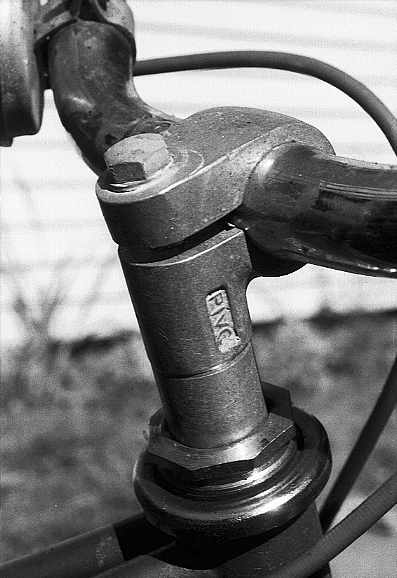
Top: John S. Allen's home page
Up: Expert witness
SPLIT HANDLEBAR STEM EXTENSIONS
|
Split handlebar stem extension on a child's bicycle

| But rigidity is a matter of degree. Though the steel bolt might seem rigid in your
hand, it is far less rigid than the larger-diameter aluminum tube into which it is
inserted. Also, the bolt is firmly secured only at its lower end of the quill where it is
threaded into the expander plug. Everywhere else, it is loose inside an oversize hole. As
a result, the upper half of the split stem extension is comparatively free to move around.
Only the lower half of the extension contributes significant strength and rigidity. The second photographic example is of a stem which failed, causing serious injuries to the cyclist. |
Stem that failed
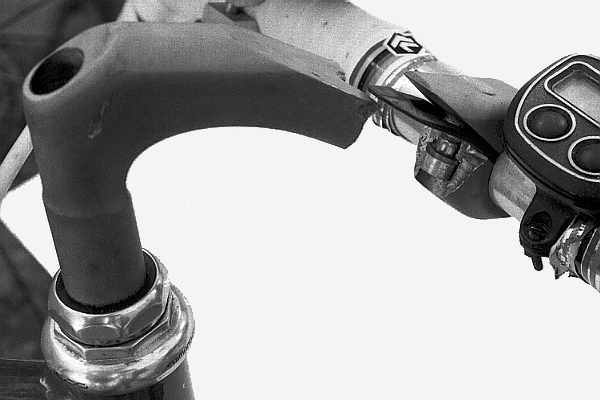
| This Modolo stem was split behind the handlebar opening, but the handlebar clamp bolt
was separate from the expander bolt. The lower part of the split stem extension carried
the full load, and was further severely weakened by the large, counterbored hole for the
handlebar clamp bolt. The stem failed at the bolt hole. Progress to failure was speeded by
the use of triathlon handlebars, whose long forward reach places greater than usual
bending loads on the stem. The photo below shows the fracture surfaces. The scalloped pattern of progressive cracking, indicative of fatigue failure, is clearly visible near the top middle of the picture, to the right of the bolt.. The stem remained rigid enough that the cyclist did not become aware of the problem until the catastrophic failure ensued. Similar Modolo stems are, incredibly, still being sold in 2006, 15 years after the crash, with model names such as X-tenos and X-serta. |
Fracture surfaces of failed stem
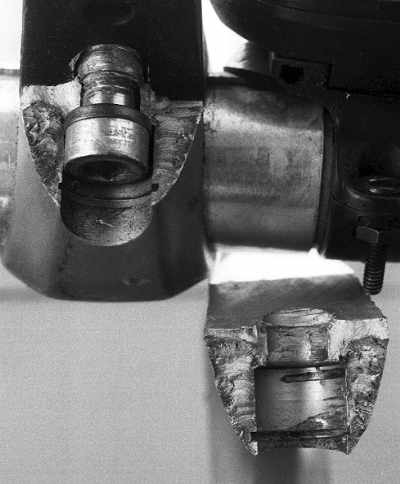
| The next example is of a stem whose forward extension has a split that twists from vertical, at the back, to horizontal, at the front. This design cleverly allows the pivoted halves of the extension to spread apart, so the handlebars can be inserted without removing brake levers or handlebar tape -- and also, when the two split halves are pivoted along with one another, they allow the angle of the extension to be adjusted. But with this stem, as with the others, the strength of the forward extension is seriously compromised. Even though both halves of the split extension are connected to the quill with equal rigidity, the stem is much weaker then one with a solid forward extension, because bending strength goes up as the square of the depth of a cross-section. In addition, a hole has been drilled behind the handlebars for the clamp bolt. The bolt hole is the likely location for failure. |
Stem with twisted split
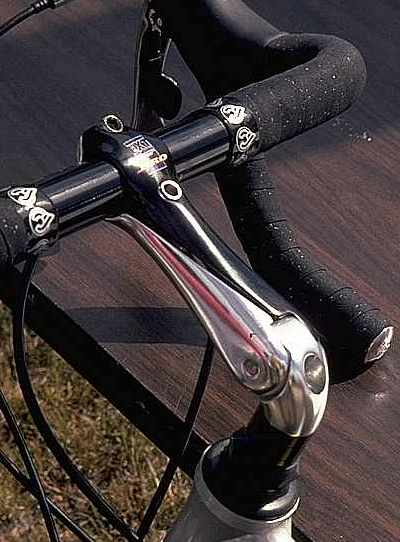
| Any split handlebar stem extension is prone to early failure, unless made bulkier and
heavier to compensate for its inherent weakness. Light weight is desirable in bicycle
components, and so a split extension is inherently an inferior design. The stems shown
were not bulked up, but instead were made to similar dimensions as other stems. The attachment of the stem shown below to the handlebars is not quite as bad, though still questionable -- because the clamp is at approximately a 45-degree angle to the stem extension, the stem extension is not compromised as much by the bolt hole. |
Stem with diagonal clamp
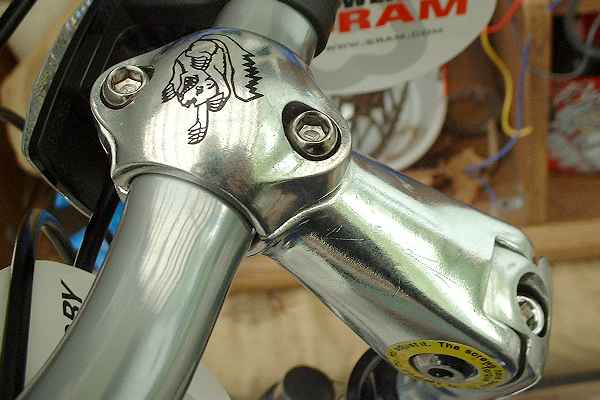
The photo below is of the same stem. I am concerned by the angle adjustment. Notice the bolt, with its bolt hole, underneath the extension. Amusingly, the stem is adjustable, but the label on it says that it should not be adjusted. This is the kind of thing that happens when lawyers get involved in bicycle design.. |
Stem weakened for elevation adjustment
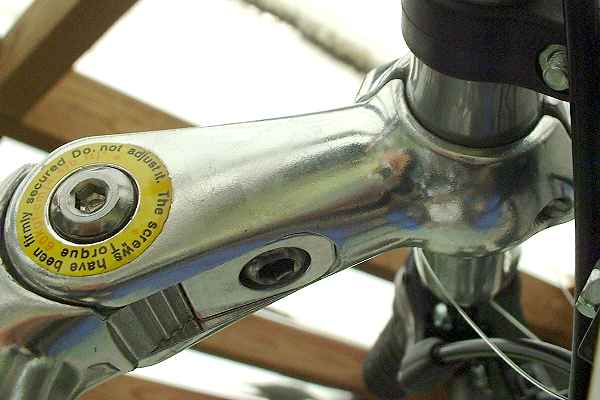
Below, as a counterexample, is a stem which largely avoids the hazard, even though it allows the handlebars to be removed and replaced without removing levers and handgrip. The rear half of the clamp is supported by the entire cross-section of the stem’s forward extension, and transmits the load from the handlebars directly rather than through the bolts. |
Non-split stem
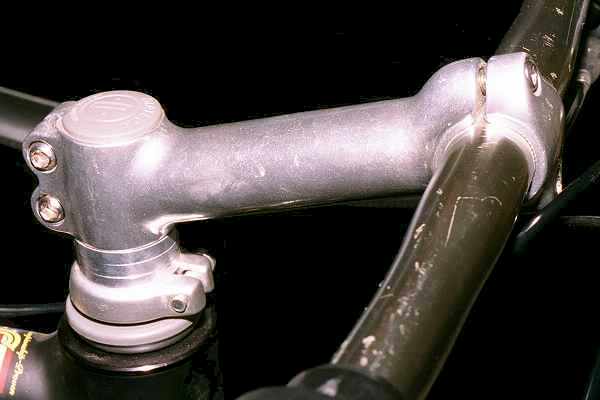
Also, this stem provides another good example of evolution by imitation. This stem is of a novel, weight-saving design without a quill. Instead, the stem extension is clamped around the top of the steerer tube (at the left side of the photo). This design is indeed different from what has been traditional for many decades. But, and this is important, the clamp arrangement is of the same kind that has been used for many decades to attach the handlebars to the stem. This is a use of a tried and true design in a new application rather than use of an untried design. |
| Top: John S. Allen's home
page Up: Expert witness |
Contents © 2001-2003, John S. Allen |